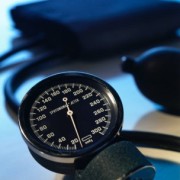Exercise is generally considered an element of a healthy lifestyle. Lately, research has not only confirmed this but it has also revealed a few less known benefits. There are various forms of exercise and all carry with them their own benefits. Each form of exercise can be categorized into one, two, or all of the below categories:
Flexibility/Yoga
Benefits: Improved flexibility, Improved balance, Mental relaxation
Aerobic
Benefits: Heart strengthening, Lung conditioning, Weight loss, Lower Blood Pressure, Lower Cholesterol (increased good cholesterol-HDL)
Strength Training/Resistance
Benefits: Increased strength, Weight loss, Increased bond density
Diseases and their recommended form of exercise:
Heart Disease/HTN/High Cholesterol: Aerobic exercise results in heart conditioning, lower BP, lower cholesterol
Chronic Lung Disease: Aerobic exercise results in improved lung tolerance and conditioning.
Fibromyalgia/Chronic pain: Yoga improves muscle functioning and decreased pain
Mood Disorders: Exercise improves mood
Old Age: Exercise improves balance and reduces the risk of fall, strength training increases bone density decreasing the risk of osteoporotic fractures, exercise decreases the risk of dementia.
Federal Recommendations:
Aerobic Exercise: 150-300min/wk moderate exercise or 75-150min/wk vigorous exercise. Vigorous exercise is something you can only maintain for 15-20 minutes.
Muscle Strengthening: Twice a week. Moderate to intense level. All major muscle groups
Tips on how to start and maintain an exercise routine:
Choose something you like to do. Make sure it suits you physically, too. For instance, swimming is easier on arthritic joints.
Get a partner. Exercising with a friend or relative can make it more fun.
Vary your routine. You may be less likely to get bored or injured if you change your exercise routine. Walk one day. Bicycle the next. Consider activities like dancing and racquet sports, and even chores like vacuuming or mowing the lawn.
Choose a comfortable time of day. Don't work out too soon after eating or when it's too hot or cold outside. Wait until later in the day if you're too stiff in the morning.
Don't get discouraged. It can take weeks or months before you notice some of the changes from exercise, such as weight loss.
Forget "no pain, no gain." While a little soreness is normal after you first start exercising, pain isn't. Take a break if you hurt or if you are injured.
Make exercise fun. Read, listen to music or watch TV while riding a stationary bicycle, for example. Find fun things to do, like taking a walk through the zoo. Go dancing. Learn how to play a sport you enjoy, such as tennis.














 How does someone acquire and maintain a healthy weight? The science is simple: burn more calories than you take in. Oftentimes, people will complain to me that they do not eat that much and don’t understand why they cannot lose weight. That is where a food diary may come in handy to identify where the hidden calories are coming from or why someone’s metabolism is so low. An underlying medical condition can be contributing to a slow metabolism, such as hypothyroidism. I often recommend making small changes that can be sustained rather than a complete overhaul that is unsustainable. Consider the following to start:
How does someone acquire and maintain a healthy weight? The science is simple: burn more calories than you take in. Oftentimes, people will complain to me that they do not eat that much and don’t understand why they cannot lose weight. That is where a food diary may come in handy to identify where the hidden calories are coming from or why someone’s metabolism is so low. An underlying medical condition can be contributing to a slow metabolism, such as hypothyroidism. I often recommend making small changes that can be sustained rather than a complete overhaul that is unsustainable. Consider the following to start: 







